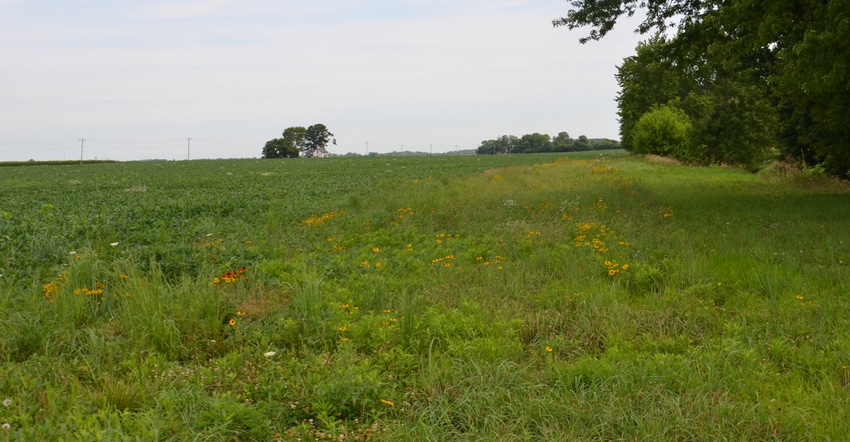November 9, 2020

How many times will you cross that rough gully with the combine and disk it closed next spring before you plant? How many times will you dig up the same blow hole beside the creek before you decide it’s not a tile hole, but soil erosion at work? When will it be time to do something permanent about these issues, invest in your farm and protect your natural resources?
Jerry Raynor, Indiana state soil conservationist, says there’s no better answer than to say you’re going to fix these problems permanently, instead of seeking temporary solutions — and you’re going to do it now. He recently announced that the application deadline for the next round of Environmental Quality Incentives Program cost-share funding is Dec. 18. That means it’s time to visit your local district conservationist and plan how to find permanent solutions for problems that arise each year.
These are the kind of problems EQIP is designed to help resolve: erosion issues that require an upfront investment. They’re problems that no-till and cover crops, while part of the solution, may not be able to fix by themselves.
Grass waterways, water and sediment control basins, filter strips and many more practices are tools in the toolbox for long-term solutions to reducing total soil loss on your farm. EQIP helps you open the toolbox by making it more affordable to invest in these practices. If your plan is approved, USDA shares part of the cost load, besides providing technical expertise.
Everyone wins
“EQIP helps agricultural producers in a manner that promotes agricultural production and environmental quality as compatible goals,” Raynor says. “Farmers can receive assistance to implement structural and management conservation practices that optimize environmental benefits on their working agricultural land while helping to increase their yields.”
What makes EQIP especially valuable is that it’s voluntary. You can continue to drive over gullies each year, instead of installing a grass waterway or water and sediment control basin — or you can seek a better solution. If you choose to live with it, keep two things in mind:
First, there is more at stake than just extra wear and tear on your equipment. If that much soil erodes in the form of gully erosion each year, topsoil is heading downstream, ending up either in someone else’s farm or at the bottom of a stream or lake. Sediment is still the No. 1 pollutant above all others. And not just soil particles leave your fields. Usually nutrients are attached to those particles, and those nutrients contribute to problems in rivers and streams.
Second, if you and thousands of farmers like you don’t decide to take voluntary action as a group, you risk involuntary action from government legislators and regulators down the road. Regulators continuously track how many pollutants wind up in places like the Gulf of Mexico, causing hypoxia, or dead zones, to some forms of aquatic life. Some producers already know too well that it’s better to do things now that make sense rather than wait for uninformed bureaucrats to decide what is best down the road.
So, act now, like Raynor suggests. Be sure to submit a signed EQIP application on or before Dec. 18 to your local Natural Resources Conservation Service field office. NRCS staff will work with applicants to determine eligibility and rank each application to compete for funding.
Comments? Email [email protected].
You May Also Like




